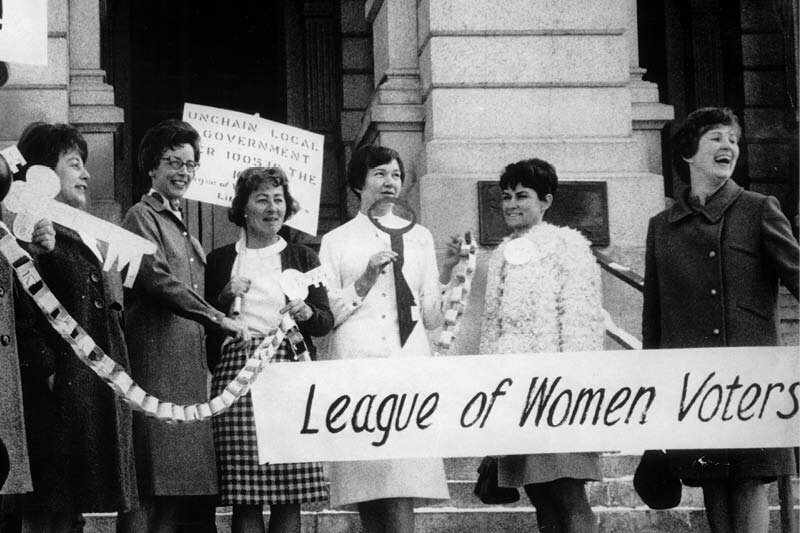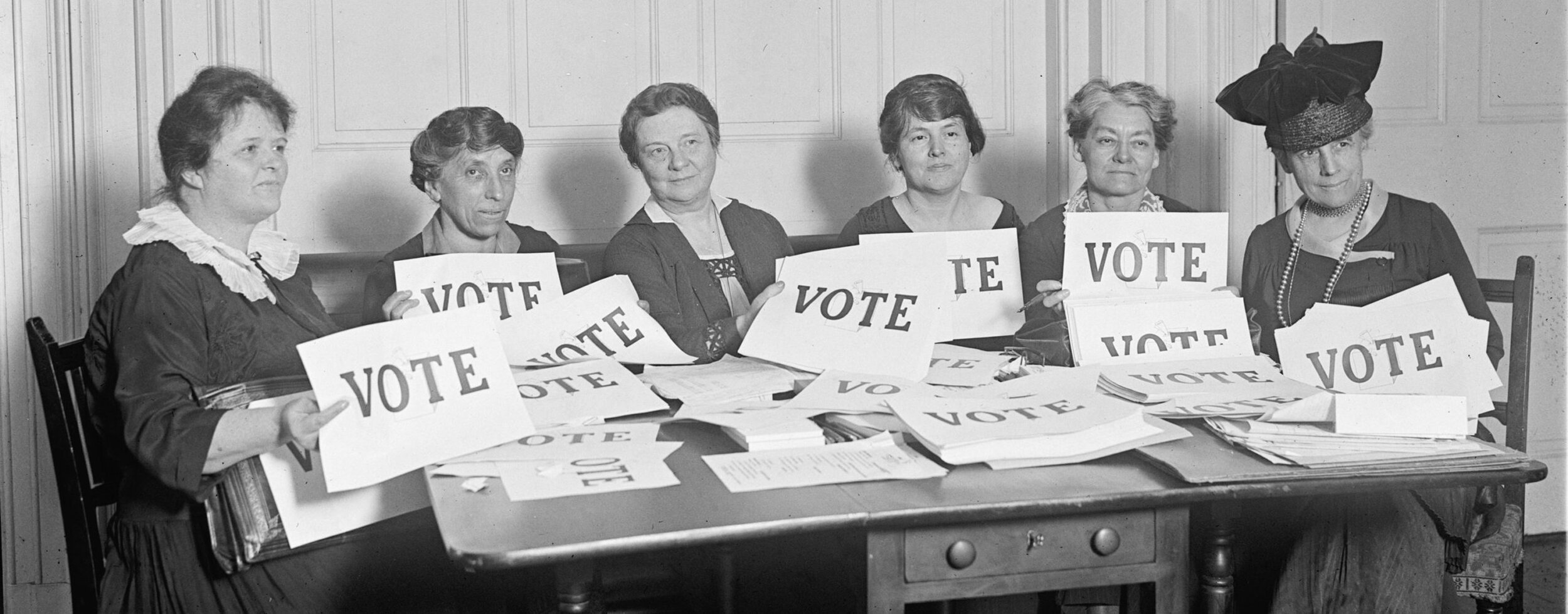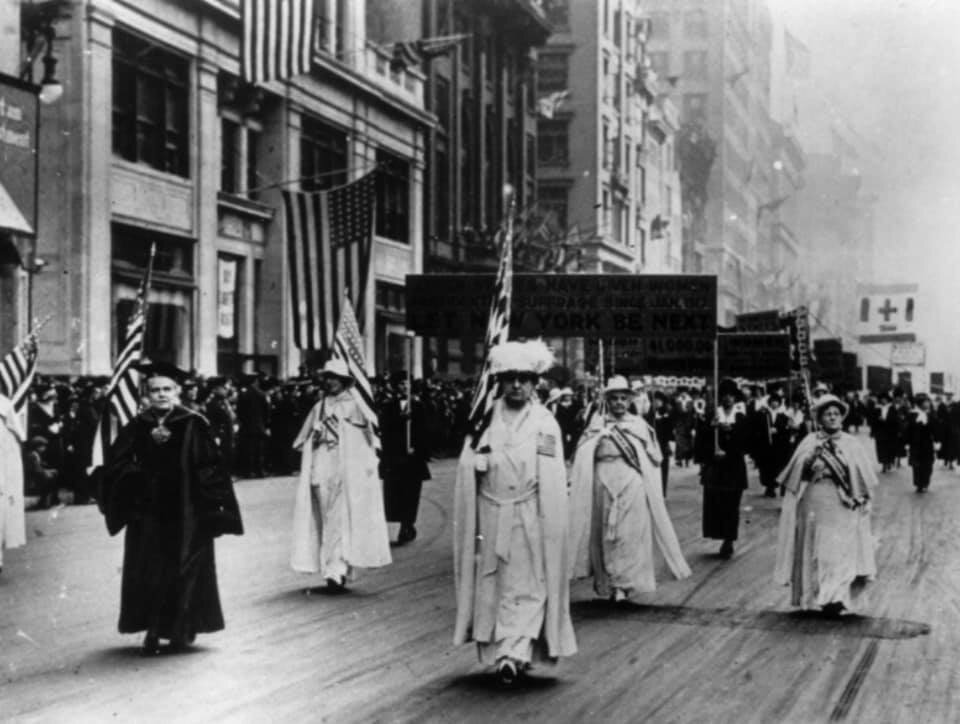Empowering Voters. Defending Democracy.

History
Chicago has a very proud League with a rich history. The League of Women Voters of the United States was founded here in Chicago on February 14, 1920. The Illinois League, followed by its local chapters, was formed shortly after the national organization.
National League History
In her address to the National American Woman Suffrage Association's (NAWSA) 50th convention in St. Louis, Missouri, President Carrie Chapman Catt proposed the creation of a "league of women voters to finish the fight and aid in the reconstruction of the nation." The next year, on February 14, 1920— six months before the 19th Amendment to the Constitution was ratified—the League was formally organized in Chicago as the national League of Women Voters. Maud Wood Park became the first national president of the League and steered the women's suffrage amendment through Congress in the last two years before ratification.
From the very beginning, however, it was apparent that the legislative goals of the League were not exclusively focused on women's issues and that citizen education aimed at all of the electorate was in order. Since its inception, the League has helped millions of women and men become informed participants in government. The first League Convention voted 69 separate items as statements of principle and recommendations for legislation. Among them were protection for women and children, rights of working women, food supply and demand, social hygiene, the legal status of women, and American citizenship. The League's first major national legislative success was the passage of the Sheppard-Towner Act, which provided federal aid for maternal and child care programs.
LEARN MORE ABOUT NATIONAL LEAGUE HISTORY!
Chicago League History
The Illinois League was organized in 1920, and shortly thereafter several Leagues were formed in Chicago neighborhoods. By 1923, Chicago had Leagues in many parts of the city, ranging in size from the Austin League with thirty members to the Hyde Park League with four hundred and fifteen.
ln 1946, the National League Convention decided that there could be only one League in each governmental unit such as the city, but to reorganize the several Chicago Leagues into one group proved very difficult. For four long years, representatives from local Leagues met to work out the details, and, finally, in 1950, Chicago became a single League with ten branches — Douglas, Downtown, Englewood, Hyde Park, Lake Shore, North Side, South Shore, Southwest, West Side, and Woodlawn.
Dorothy Ogram was LWV Chicago’s first president. The portfolios of the first board of directors indicate the extent of LWV Chicago’s policy interests at the time: natural resources, welfare, finance, international trade, civil rights, education, housing, and government structure.
Over sixty years later, LWV Chicago attracts members from just as many areas of the city who advocate for just as wide a range of policies as it did when it was founded.




